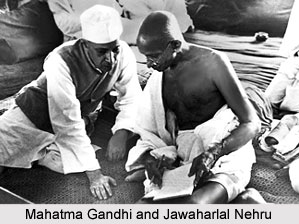 The Princely States of India and Indian National Congress shared a unique political relationship during the era of the Indian freedom struggle. Some scholars believed that the Indian National Congress deliberately detached the party from the political mobilization of the Indian princely states. Prior to 1920, the political and economic demands of the Congress party totally abandoned the native states. Further more, the Indian National Congress declined to engage in the democratic struggle of these princely states. The policy decision was based on the need to focus on the primary goal of attaining freedom from the British and to evade regional disintegration, as there were limited resources. During the initial phase of the Congress, determined lawyers in the party were apprehensive regarding their lack of legal standing in the princely states, and were concerned about the complexities in managing several distinct units where autonomy of the civilians were less cared for than in regions under the rule of the British Empire in India.
The Princely States of India and Indian National Congress shared a unique political relationship during the era of the Indian freedom struggle. Some scholars believed that the Indian National Congress deliberately detached the party from the political mobilization of the Indian princely states. Prior to 1920, the political and economic demands of the Congress party totally abandoned the native states. Further more, the Indian National Congress declined to engage in the democratic struggle of these princely states. The policy decision was based on the need to focus on the primary goal of attaining freedom from the British and to evade regional disintegration, as there were limited resources. During the initial phase of the Congress, determined lawyers in the party were apprehensive regarding their lack of legal standing in the princely states, and were concerned about the complexities in managing several distinct units where autonomy of the civilians were less cared for than in regions under the rule of the British Empire in India.
In the latter part of the 19th century, various progressive native rulers undertook social reform activities which were optimistic instances of the capacity of the Indians to rule and portrayed of resistance of the native chiefs to the western models. The members of the Indian National Congress were professionals and were fascinated by the profitable opportunities for employment as administrators and legal counsel in the Indian princely states. As the preference of the British administration for non-intervention was developed in practice, which was done in reply to local conditions of specific Residents of British India. As a result, Mahatma Gandhi, including other members of Congress maintained proper contacts with the Indian princely states and even personally visited the territories. After his return to the country in the year 1915, Gandhi declared a policy of non-intervention in explicit political mobilisation within the Indian princely states for around a period of 2 decades. He also persuaded his chosen successor, Jawaharlal Nehru, to become more involved in the politics of the princely states of India.
During the occurrence of the Devi movement the influence of the Indian National Congress and Gandhian sanctions in the districts of Gujarat spread to the princely state of Baroda and Bombay presidency. After 1922, Sardar Vallabhbhai Patel converted the Devi movement to a secular from a religious one; and unsuccessfully attempted to alleviate the class conflict against the Parsis. The authorities of Baroda reacted both considerately and aggressively that the British Government of India; and depicted that personal dictatorship and autocracy was probable even in one of the progressive princely states. In the year 1925, Mahatma Gandhi presided at the Third Raniparaj Conference and several natives provided support to the Gandhian programs. Even though only a few members of the Congress remained active in princely states during the British Raj in the 1920s, there was no divergence in the policy of the Indian National Congress over the decade. The political authorities from the princely states took several efforts to set up managing organizations and to develop better relationship with the Congress party in the year 1927.
After the Indian States` People`s Conference (ISPC) in Bombay (now Mumbai) in 1927, the Indian National Congress allowed people from the different princely states to join the party and the Indian freedom struggle. Several individuals also participated in the Civil Disobedience Movement as well. Consequently, these members asked for mutual support from the Indian National Congress in their effort for a dependable administration in the princely states.
Jawaharlal Nehru was appointed as the president of the All India States` People`s Conference (AISPC) in the year 1939. But the AISPC was never successful in developing into a noteworthy national organisation. Therefore the political mobilization amongst the subjects of the Indian princely states continued at the state level. Some of the leaders of the Indian National Congress participated in the issue occasionally and pursued specific agendas.



















